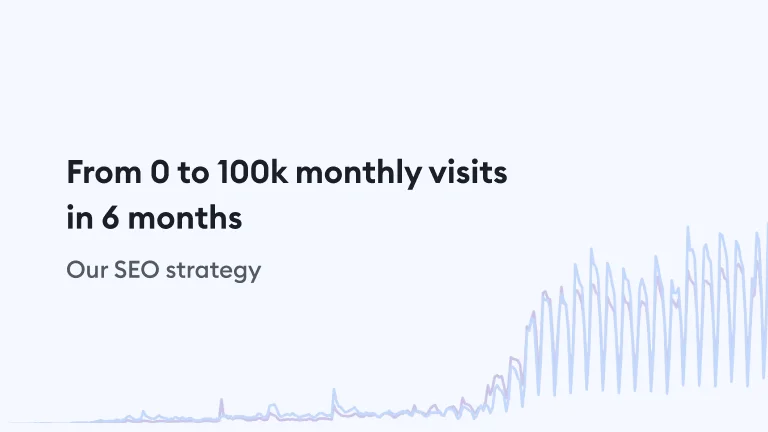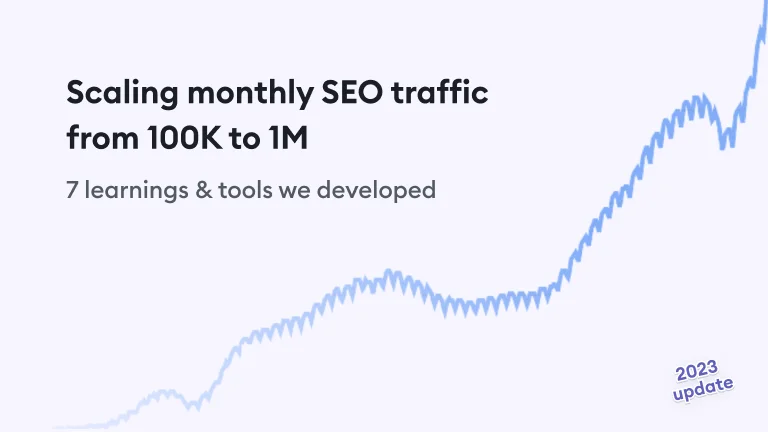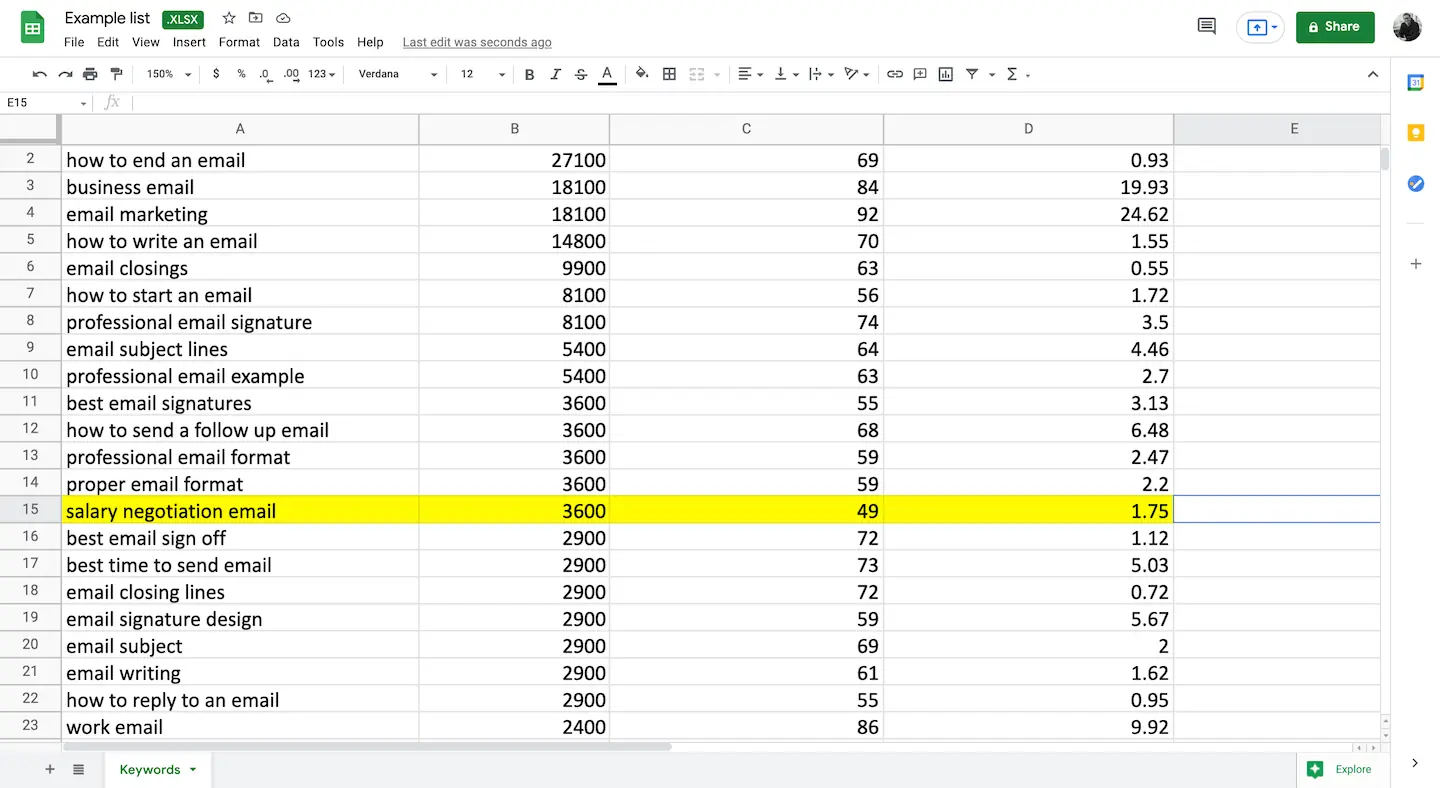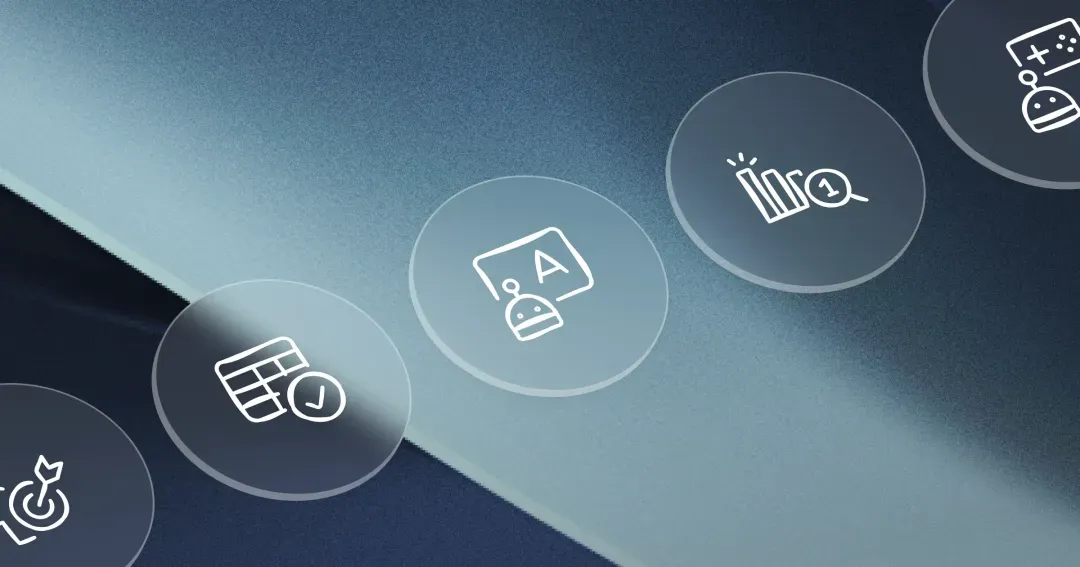
Six months into Flowrite's journey, we started our content marketing efforts to grow our waitlist consisting of a few thousand early adopters back then. Another six months later, the work is beginning to pay off, as the number of people on the list has climbed to +25,000 people, SEO-driven content having brought in +30% of all the new signups.
From the get-go, content intuitively felt like a natural fit for our growth lane, but it wasn't until we managed to nail a SEO content strategy focusing on solving customer pain points that we started to see the first signs of early success.
Today, SEO content drives close to 100,000 monthly visits to our website (September 2022 update: a year later the number is close to 500,000), with the best performing blog post converting more than 5% of the visits, and we are only getting started.
In recent months, those who have kept close tabs on our work most typically have asked how we decide what content to produce. The answer is pain-point SEO. With the hopes to help other early-stage startups approach creating their SEO content strategy, this blog post aims to shed light into what it's all about.
Next, I will introduce you to pain-point SEO, explain why it drives more conversions than the typical keyword-driven approach, especially in the SaaS business, and how you can apply the strategy for your startup through examples from our journey.

Scaling SEO from 100K to 1M in 15 months (with 1-person marketing team)
They said early-stage startups should not go all-out on SEO. Well, we did anyways, and here’s what happened…
What is pain-point SEO?
The term 'Pain-Point SEO' was initially coined by content marketing agency Grow and Convert. They discovered that the best-performing content they created for their clients – mainly in SaaS – was not targeting the highest traffic potential keywords with the lowest competition. Instead, it was content that targeted long-tail keywords that people search for when they're trying to solve a specific problem.
Pain-point SEO is a strategy for building high-converting traffic to your website by identifying problems your potential customers face and then creating content that helps them solve that problem. It's all about prioritizing content around high-intent keywords over high-volume keywords and using conversions instead of traffic as the measure of success. It's built on the insights that your best customers are often already educated by someone else, creating the top of funnel content, and have already moved to the middle and bottom part of the funnel.
To state the obvious, this isn't anything revolutionary, of course. However, comparing pain-point SEO to the typical keyword-driven approach reveals the back-to-the-basics brilliance of this strategy. It can serve as an eye-opener for founders and marketers alike.
Why your SEO content strategy should focus on your customer's pain points?
When getting started with SEO-focused content marketing, people tend to research keywords and topics they think their target customers would be interested in.
The end result is a sheet of keywords prioritized based on which keywords have the highest search volume, and they end up picking the easiest ones to rank for. This prioritization of traffic potential and difficulty for ranking is driven by a flawed success metric of increasing traffic, not conversions.
Time goes on, content is produced, and after a while, organic search traffic starts to grow – as it should. After all, the whole approach focuses on increasing it. But what about conversions? Most often, there won't be measurable growth in terms of conversions because the method doesn't take the search intent into account.

If you feel an unpleasant feeling in your chest reading the last part, don't worry. We have all been there. Including us at Flowrite.
What makes pain-point SEO such a brilliant (yet simple) content strategy is that it inherently starts from the search intent instead of the keyword. By identifying customers' pain points first, and only then finding keywords that the customers are using when trying to find solutions to the problem, you can better predict which keywords will generate conversions instead of just traffic.
Helps if one of your founders or CEO is an amazing web developer and designer, ready to experiment with new ideas.
Typically these keywords are terms that target the middle or bottom of the funnel and have lower volumes. They have fewer people searching for them, but those people have higher intent to purchase, making their conversion potential much more significant than those of high volume keywords. The holy grail would be to find keywords that have both high volume and high purchase intent – unfortunately, typically, there's not too many around.
Pain-point SEO is also accessible for those just starting up is that the lower-volume, high-intent keywords are usually much easier to rank for. This is because most of your competitors are focused on high-volume keywords, which opens up a possibility to outperform them by taking the game to a different field.
How to get started with pain-point SEO?
Identifying high converting keywords starts with figuring out the most pressing pain points that your product can solve for your best-fit customers. When you know what problems are most likely to lead to a purchase of your product, you can map the intent to keywords the potential customers use to find solutions to relieve their pain. Finally, you need to determine the best content formats to match the search intent in a way that positions your product as a pain-killer.
1. Identify your customers' pain points
The pain-point SEO process starts with customer research to figure out who your ideal customers are and what pain points your product can solve for them. If you are working at an established company, you most likely have this part covered. However, if you are building an early-stage startup, you are probably still working on customer discovery when kickstarting the content marketing efforts, making this first step even more important.
There are various customer research methods, but at Flowrite, we followed Steve Blank's legendary advice: "Get out of the building." At least digitally. We scheduled calls with our early beta users to build understanding of what problems the product solves for them, what features they get the most value from, how they describe the product, and the value they get from it. And whom they view as our competitors.
In addition to talking to our users, we constantly accumulated quantitative data on people joining our waitlist via surveys they fill when signing up. As the waitlist and number of beta users grew, we were able to start to identify our best-fit customers. Through this work, we were able to determine pain points different customer segments had down to the type of emails that caused them the most grey hairs.
So, no matter what you do, don't be one of the founders or marketers who don't have direct contact with your customers. Talk with them over and over again, and apply quantitative methods to uncover the most salient pain points your product can solve for your best-fit customers – not just any customer.
2. Map the intent to keywords
When you are clear on the pain points of your best-fit customers, it's time to conduct keyword research to find high-converting keywords and topics that indicate that the potential customer is already looking for a solution to their problem.
These keywords and topics are often long-tail keywords targeting middle and bottom of funnel keywords and topics that capture people who have some purchase intent, are ready to try potential solutions, or are ready to make a purchase decision. Their volume is lower than the head keywords that are important for driving awareness but don't have a purchase intent. Focusing on these high-intent keywords will lead to better conversion rates and a higher conversion volume than the top of funnel traffic. In other words, these keywords and topics of the content are specific. In fact, the more specific the keyword or topic is, the more effective it will be for filtering for customers with the exact pain point your product solves.
To illustrate this point, take a look at the following examples:
- how to cold email investors vs. cold email
- influencer outreach email example vs. influencer marketing
- best ai email generators vs. ai writing
In Flowrite's case, our customer research showed that people generally have three specific pain points related to writing emails. Furthermore, we learned that behind these pain points are particular types of emails they need to write.
As we proceeded, we started to see that in addition to suffering from at least one of these pains, our best-fit customers needed to write these emails daily. Equipped with these insights, we were able to identify the right keywords and determine the type of content to create to help them solve the pain.
So much has been written about keyword research that we won't go too deep into the tactical level here. As long as you remember that your job is to identify keywords and topics that indicate that the searcher is looking for a solution to a problem your best-fit customers have, you are on the right track. There are tons of tools available that will help you with keyword research. These tools come in various price points from free solutions like Google Keyword Planner to Ahrefs, Moz, and SEMrush. No matter where you are in your company's journey, there's an option that will get you started.
3. Choose the right type of content
Now that you know what problems your best-fit customers have and what keywords they use to look for a solution to this pain they are experiencing, it is time to ideate and create SEO content that converts. Through their work with various clients, Grow and Convert – the originators of the term pain-point SEO – have identified five different types of articles that work well with typical keyword searches when finding solutions for a pain-point.
1. Comparison posts
Objectively compare your product to your top competitors.
2. Best product lists
Helps searchers discover the best products in the category they're searching for.
3. Alternatives to X
Help searchers discover alternatives to your competitors' products.
4. Articles that talk about pricing
Write about the pricing of your product if you don't publicly disclose it – or do the same for your competitors.
5. Product use cases
Help searchers figure out how to solve a problem and present your product as a potential solution.
What is great about these SEO content types is that they are universal to the extent that they can be applied close to any industry and product category. You can also do your own research by going through the top SERPs (search engine results pages) for your keywords and look for inspiration from similar keywords for different categories.
Remember when I mentioned the specific type of emails behind the pain points of our best-fit customers in the last section?The cornerstone of our SEO content strategy has been product use cases. Our approach has been to help the users to write these emails manually without Flowrite and show how the new way to write that we've created solves the age-old problem far more effectively day-to-day.
As these use cases are basically as old as email as means of communication, the volumes of the keywords are decent, to say at least, which is good on the surface level. However, that has meant that we've needed to box outside our weight class from the get-go. Only months later, the results already show that it was a fight worth picking. Despite starting from scratch, we've managed to get some of the articles ranking for competitive keywords, and they already bring in a steady stream of signups that moves the needle for an early-stage startup like us.
As we are building in an emerging category of AI writing, the other types of content highlighted here have been more challenging. We've experimented with best product lists, which show potential in terms of good conversion rates but winning those top SERPs has been harder. According to Grow and Convert, the typical mistake companies make is to overlook precisely the type of opportunities in the middle and bottom funnel. So, if you are facing a similar situation, I recommend you take a closer look at more product and category related keywords – we have, and it managed to surprise us.
What should you take away from this?
It's good to keep in mind that pain-point SEO is first and foremost about prioritizing your content marketing efforts.
Despite its thesis being that the typical keyword-first approach yields worse results in terms of conversions, it doesn't mean that top of funnel content wouldn't be essential. If you want to drive growth through content, you need to eventually build a full-funnel approach, and in some cases – think ad sales and genuinely creating a new category – it does make sense to start with a focus on traffic potential. But especially for businesses living and dying from user acquisition, this strategy does propose a strong case for exhausting the potential of long-tail keywords with purchase intent first.
Let's put it this way: After reading this blog post, what's your reasoning for prioritizing producing top of funnel content for high-volume keywords that don't have purchase intent before going after the high-intent but lower volume keywords deeper in the funnel? I would love to hear it!



